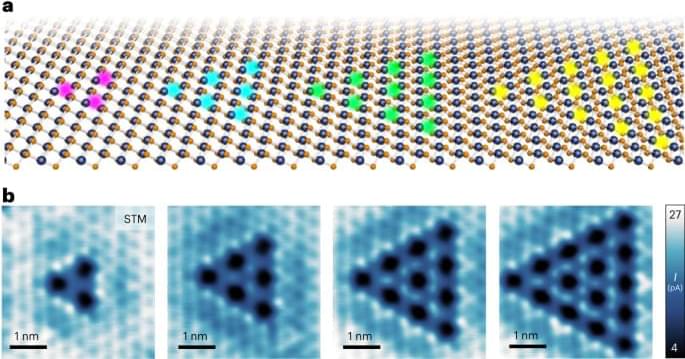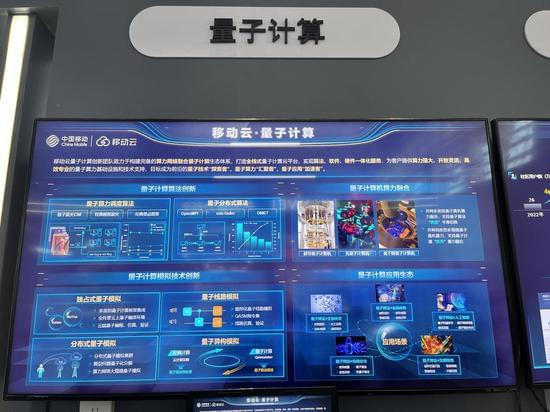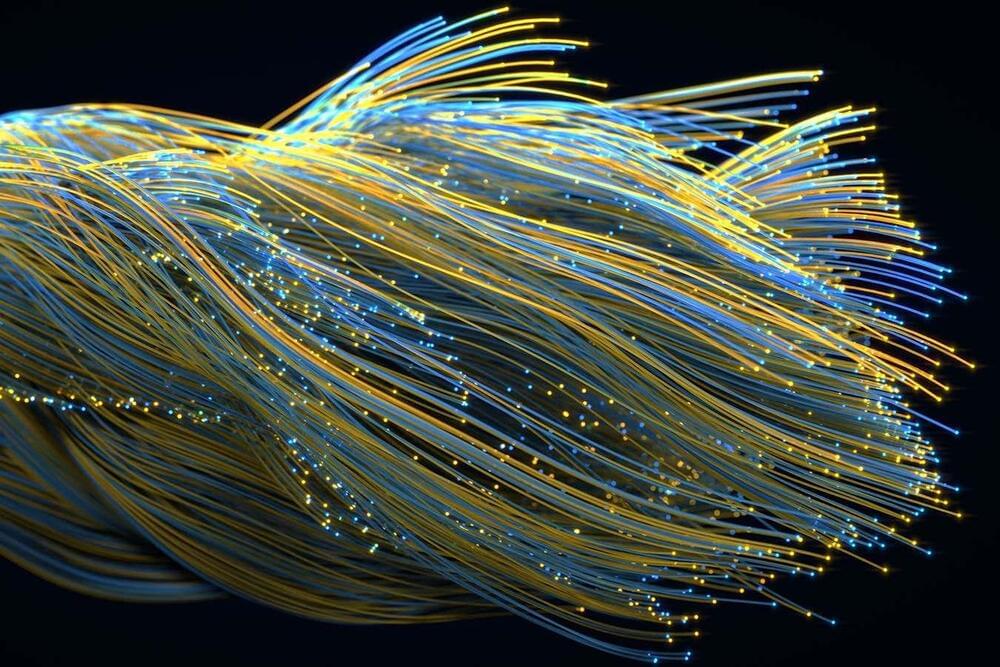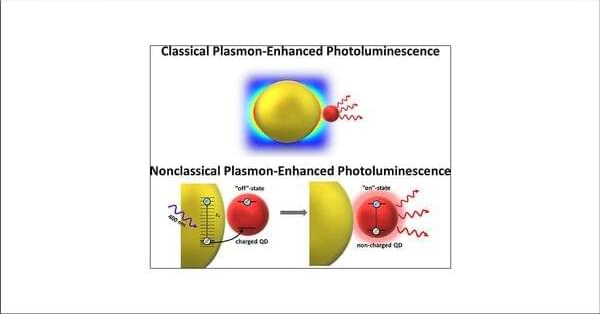A demonstration that certain electron-transport processes can be tuned in a hybrid semiconductor-superconductor system could be useful for developing quantum computers.



Self-assembled single vacancies in a 2D transition metal dichalcogenide are used to fabricate atomically precise quantum antidots. The resulting antidots have tunable quantum hole states, which are robust to oxygen substitutional doping, and could have applications in quantum information and photocatalysis technologies.

The Association for Computing Machinery has just put out the finalists for the Gordon Bell Prize award that will be given out at the SC23 supercomputing conference in Denver, and as you might expect, some of the biggest iron assembled in the world are driving the advanced applications that have their eyes on the prize.
The ACM warns that the final system sizes and final results of the simulations and models run are not yet completed, but we have a look at one of them because the researchers in China’s National Supercomputing Center in Wuxi actually published a paper they will formally released in November ahead of the SC23 conference. That paper, Towards Exascale Computation for Turbomachinery Flows, was run on the “Oceanlite” supercomputing system, which we first wrote about way back in February 2021, that won a Gorden Bell prize in November 2021 for a quantum simulation across 41.9 million cores, and that we speculated the configuration of back in March 2022 when Alibaba Group, Tsinghua University, DAMO Academy, Zhejiang Lab, and Beijing Academy of Artificial Intelligence ran a pretrained machine learning model called BaGuaLu, across more than 37 million cores and 14.5 trillion parameters in the Oceanlite machine.
NASA tossed down a grand challenge nearly a decade ago to do a time-dependent simulation of a complete jet engine, with aerodynamic and heat transfer simulated, and the Wuxi team, with the help of engineering researchers at a number of universities in China, the United States, m and the United Kingdom have picked up the gauntlet. What we found interesting about the paper is that it confirmed many of our speculations about the Oceanlite machine.

Any physical object, alive or inanimate, is composed of atoms and subatomic particles that interact in different ways governed by the principles of quantum mechanics. Some particles are in a pure state—they remain fixed and unchanged. Others are in a quantum state—a concept that can be difficult to understand because it involves having a particle occupy multiple states simultaneously. For instance, an electron in a pure state spins up or down; in a quantum state, also referred to as superposition, it spins up and down simultaneously. Another quantum principle states that particles can be in a state of entanglement in which changes in one directly affect the other. The principles of superposition and entanglement are fundamental to quantum computing.
Quantum bits, or qubits, are the smallest units of data that a quantum computer can process and store. In a pure state, qubits have a value of 1 or 0, similar to the bits used in computing today. In superposition, they can be both of these values simultaneously, and that enables parallel computations on a massive scale. While classical computers must conduct a new calculation any time a variable changes, quantum computers can explore a problem with many possible variables simultaneously.
Existing computers, although sufficient for many applications, can’t fully support all of the changes required to create a connected and intelligent-mobility ecosystem. Quantum computing (QC) could potentially provide faster and better solutions by leveraging the principles of quantum mechanics—the rules that govern how atoms and subatomic particles act and interact. (See sidebar, “Principles of quantum computing,” for more information). Over the short term, QC may be most applicable to solving complex problems involving small data sets; as its performance improves, QC will be applied to extremely large datasets.
Join us as we explore the intersection of AI and Quantum Computing, at the forefront of tech advancements. 🤖
Want to support our production? Feel free to join our membership at https://www.youtube.com/BeeyondIdeas/join.
See behind the scenes and everything else at https://www.instagram.com/beeyond.ideas/

China Mobile on Saturday launched the largest quantum cloud computing platform in China along with China Electronics Technology Group Corp (CETGC), vowing to take quantum computing to a new level of practical use.
As the country’s most recent computing platform, it achieved hybrid computing of both quantum and general computing power for the first time in the industry, China Mobile said in a statement.
The platform was unveiled at the 2023 China Computational Conference in Yinchuan, Northwest China’s Ningxia Hui Autonomous Region.
With CETGC’s ability to self-design and build 20-qubit quantum computing chips, the platform is linked with advanced 20-qubit quantum computers, giving its users an open quantum fusion computing power testing environment.
A former physics teacher says America could lose its technological edge if it doesn’t do a better job of teaching quantum information science – starting in high school.
Scientists propose a spray that will make the most aggressive brain cancer tumors commit suicide. This spray contains bio-nanoantennae, special molecules that can alter cells at the quantum level.
Scientists at the University of Nottingham have devised a unique spray treatment method to cure glioblastoma, a highly aggressive brain cancer that annually kills over 10,000 people in the US.
They also claim this is the first-ever quantum therapeutic approach that shows cancer can be eliminated via quantum signaling, i.e., by making changes in the biology of cells at a quantum level.

A network that connects quantum devices and a central server that spans Hefei, China, can allow multiple secure quantum chats at once.

Metal-enhanced photoluminescence is able to provide a robust signal even from a single emitter and is promising in applications in biosensors and optoelectronic devices. However, its realization with semiconductor nanocrystals (e.g., quantum dots, QDs) is not always straightforward due to the hidden and not fully described interactions between plasmonic nanoparticles and an emitter. Here, we demonstrate nonclassical enhancement (i.e., not a conventional electromagnetic mechanism) of the QD photoluminescence at nonplasmonic conditions and correlate it with the charge exchange processes in the system, particularly with high efficiency of the hot-hole generation in gold nanoparticles and the possibility of their transfer to QDs.